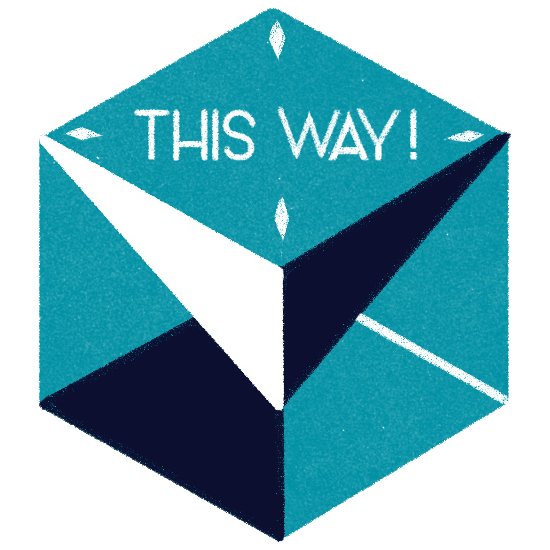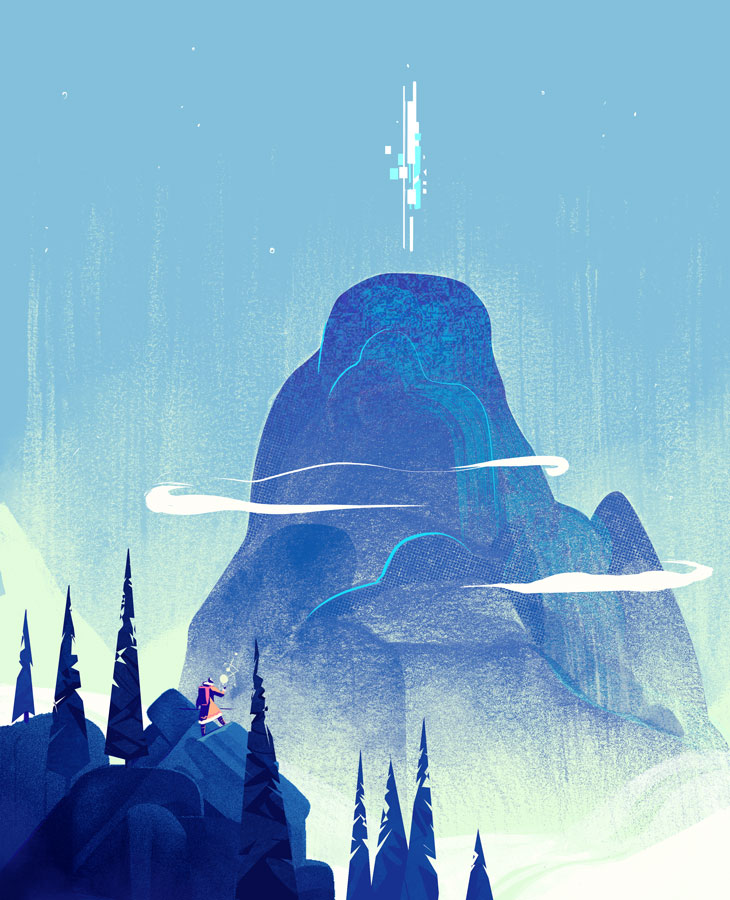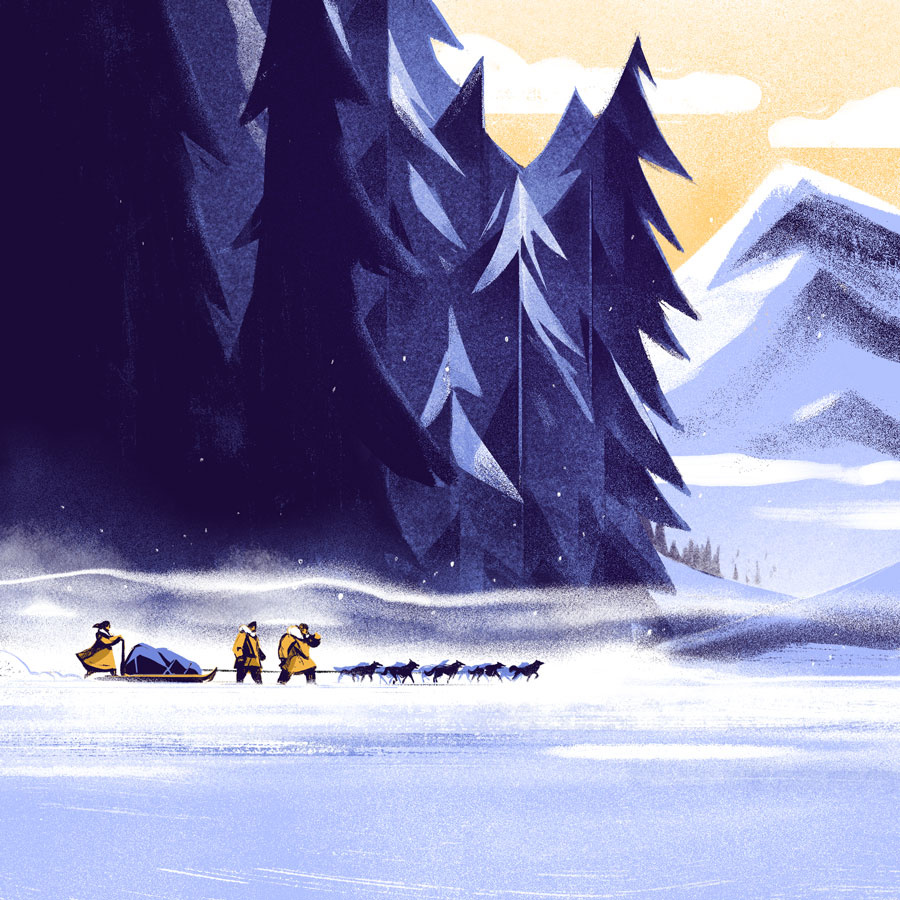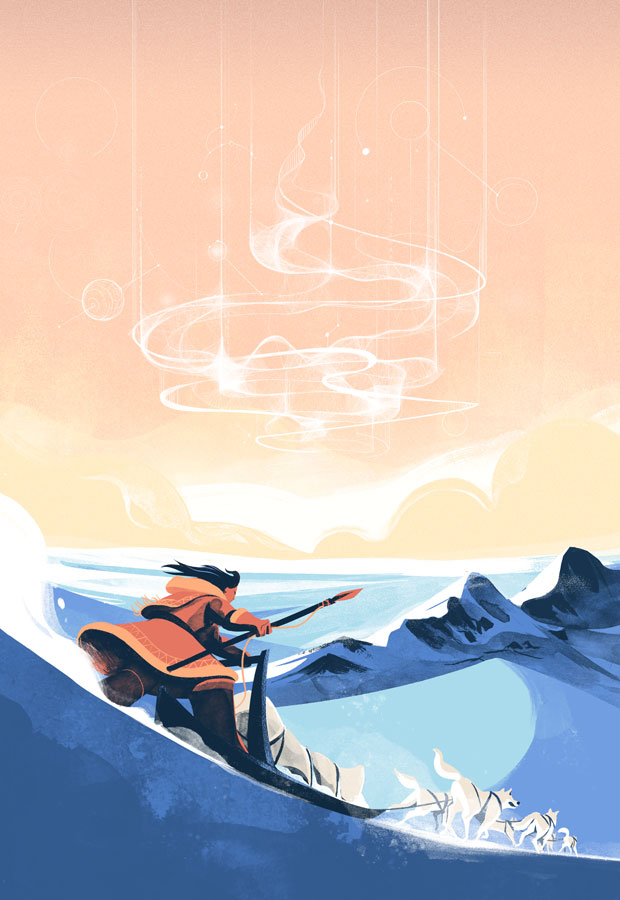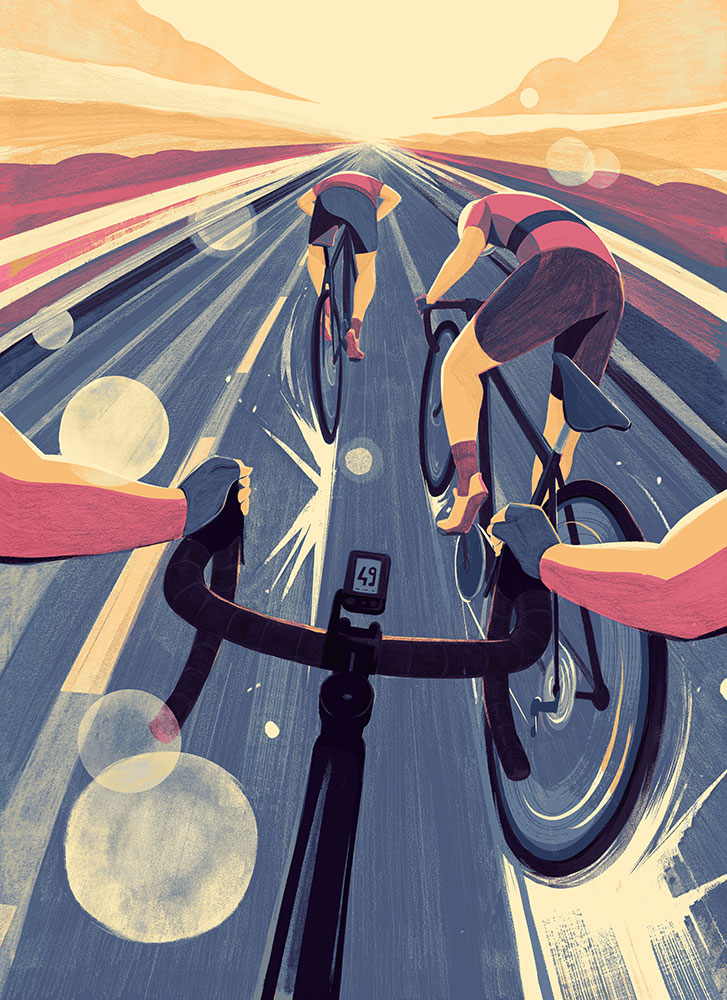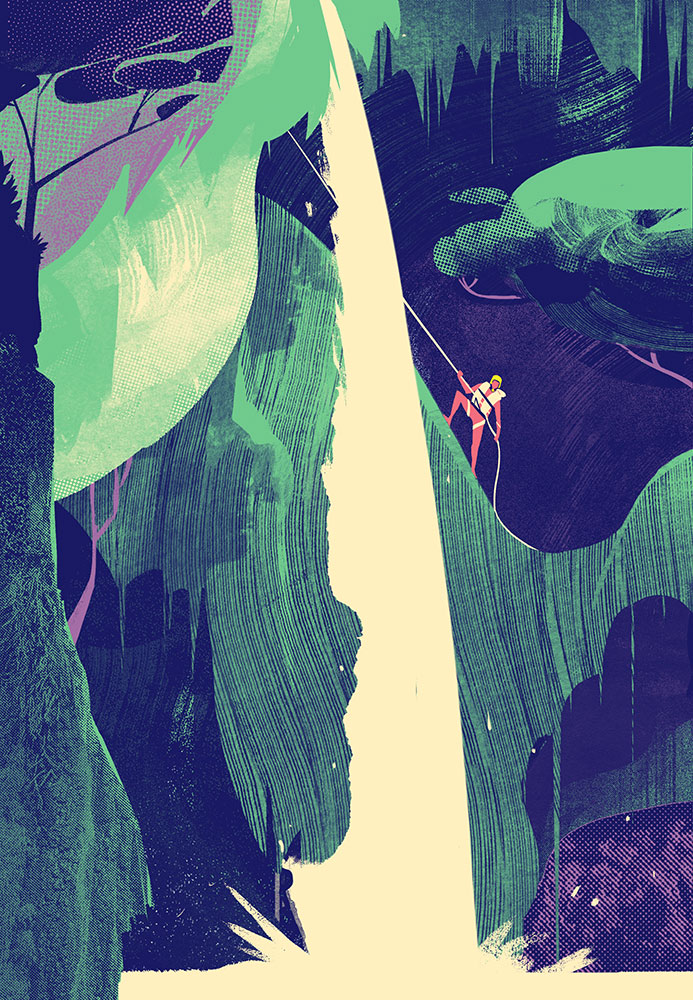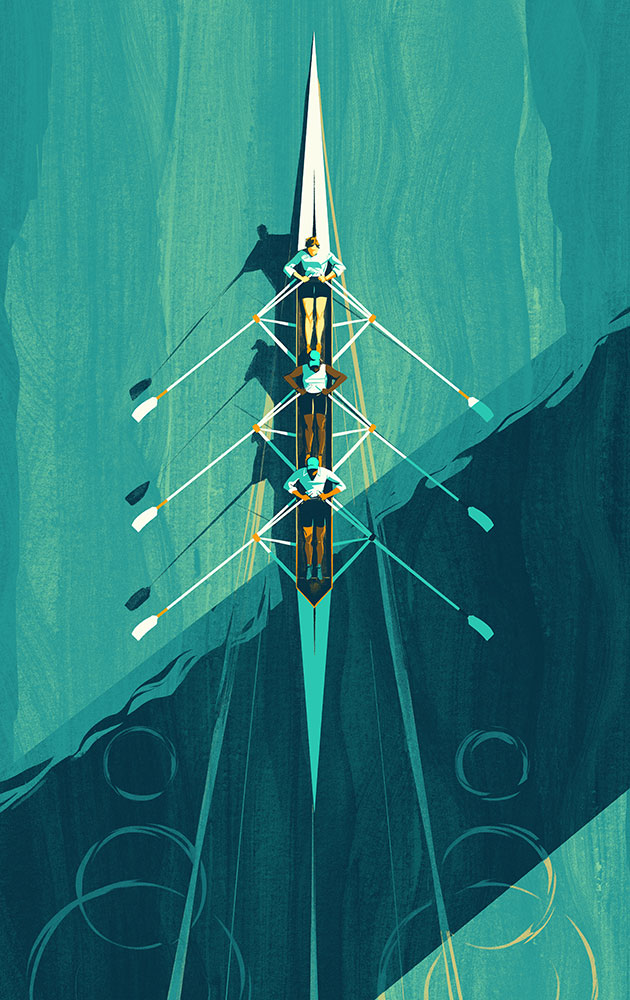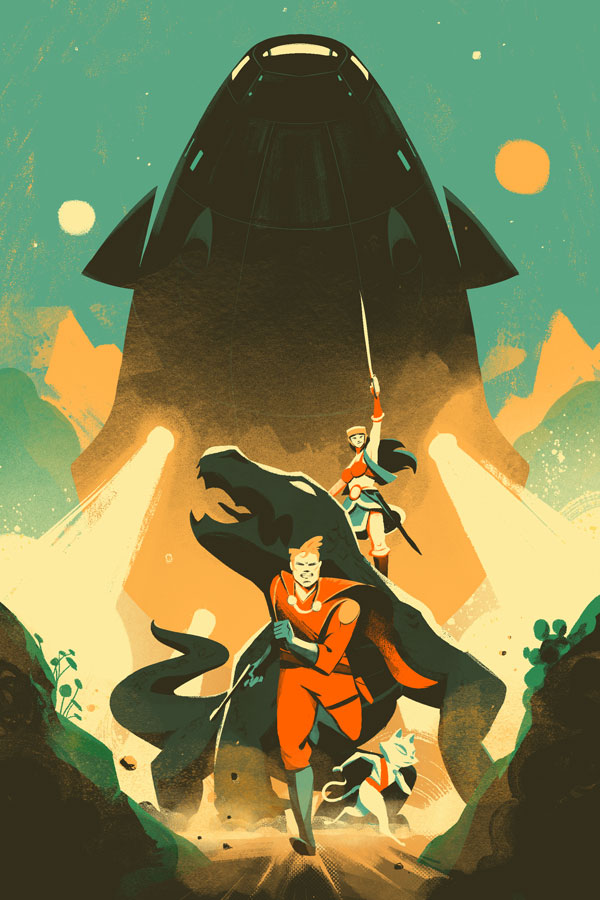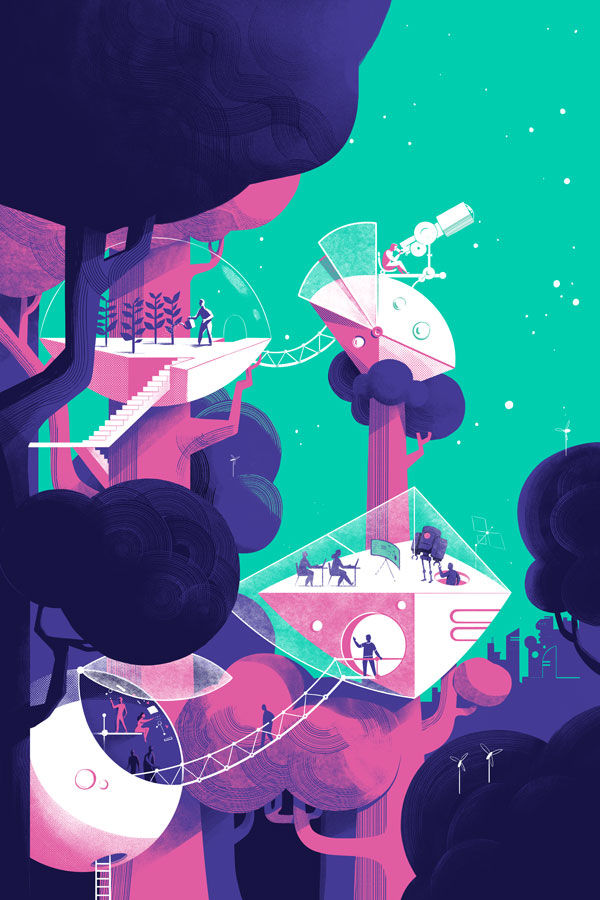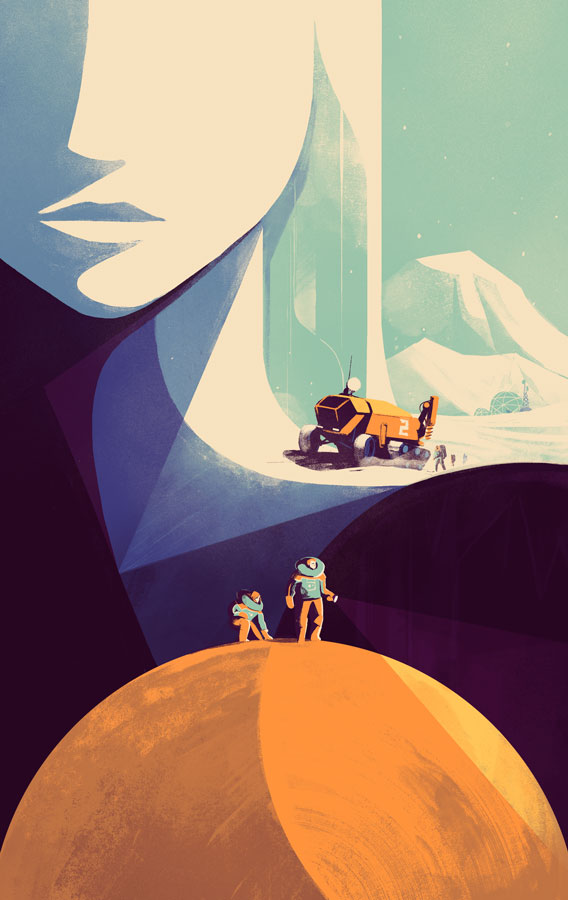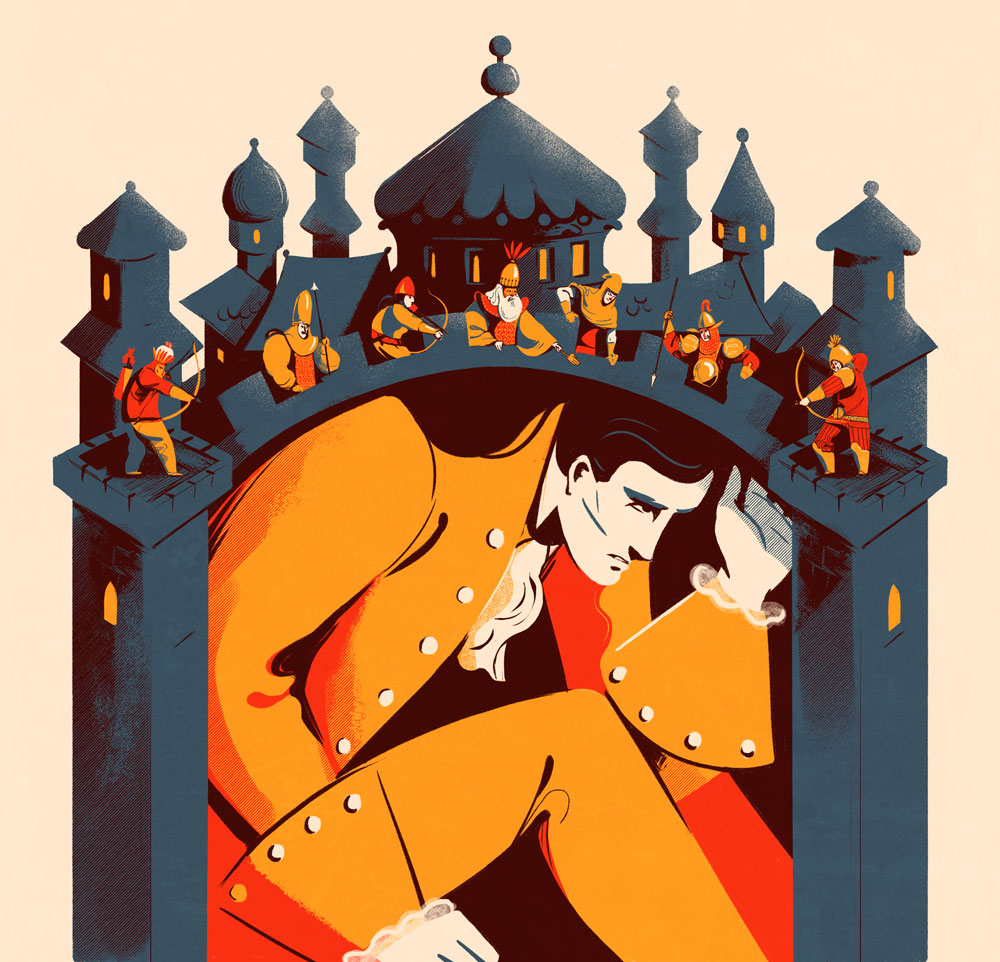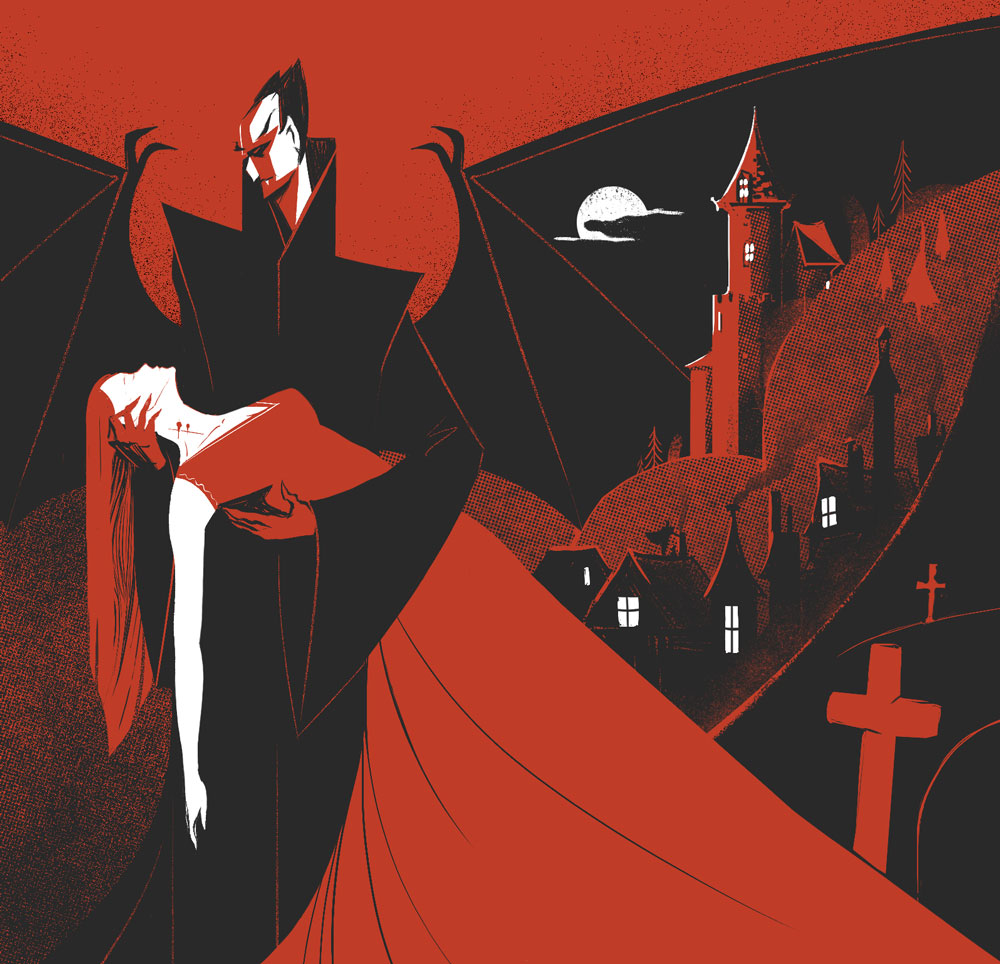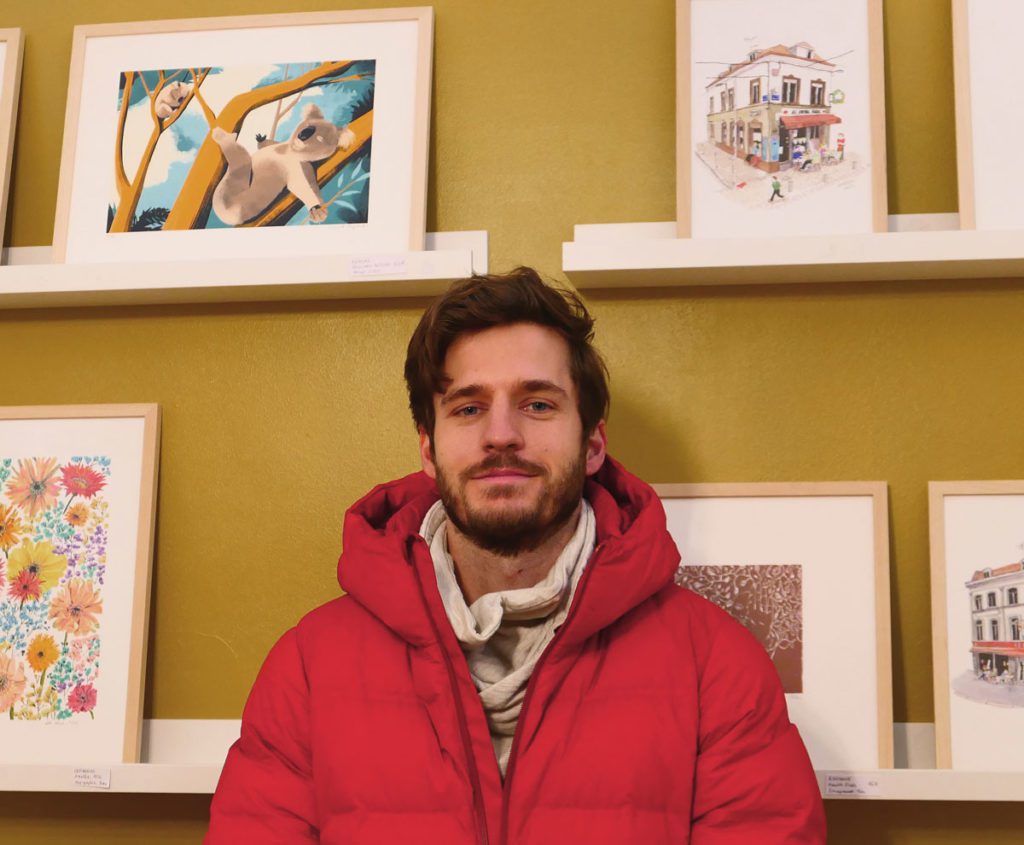
For Part One of this interview, click HERE.
Hello again Explorers! We’re back with Part Two of our interview with I C E artist, Léonard Dupond!
ANTON: So…. In my interview with Samson & Hugo, Hugo mentioned how he (shyly) approached you at your shared working space with the idea of doing the art for I C E. What was your reaction to this?
LÉONARD: Yeah, it’s true. Hugo is quite a shy person…
ANTON: [laughs]
LÉONARD: …I guess he thought of it a long time. But when he came — back then I was doing a lot of commercial projects, and I was looking for a way to draw more personal stuff. And having my own project. But nothing quite definite. So when he came — and I could tell he was thinking about it for a long time — and said ok “Do you want to draw for ICE… the project I told you about?” And I said quite easily, “Yeah, ok!”
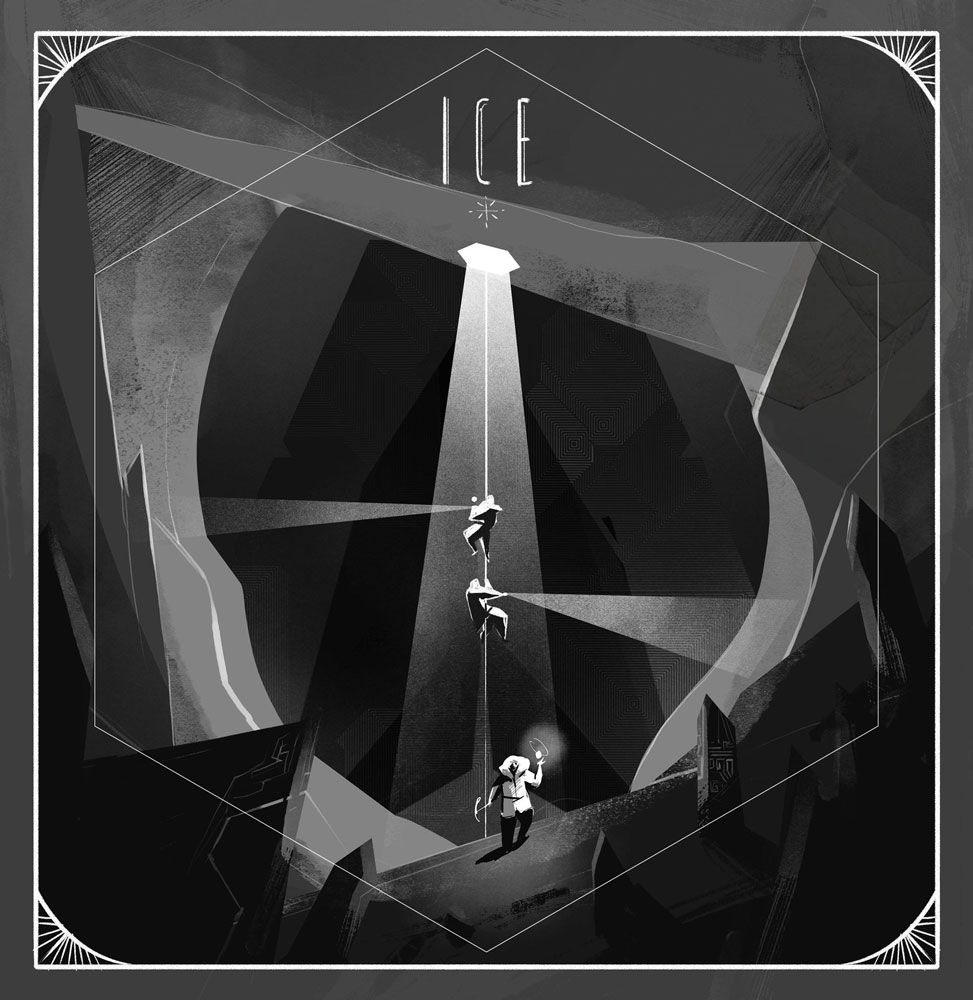
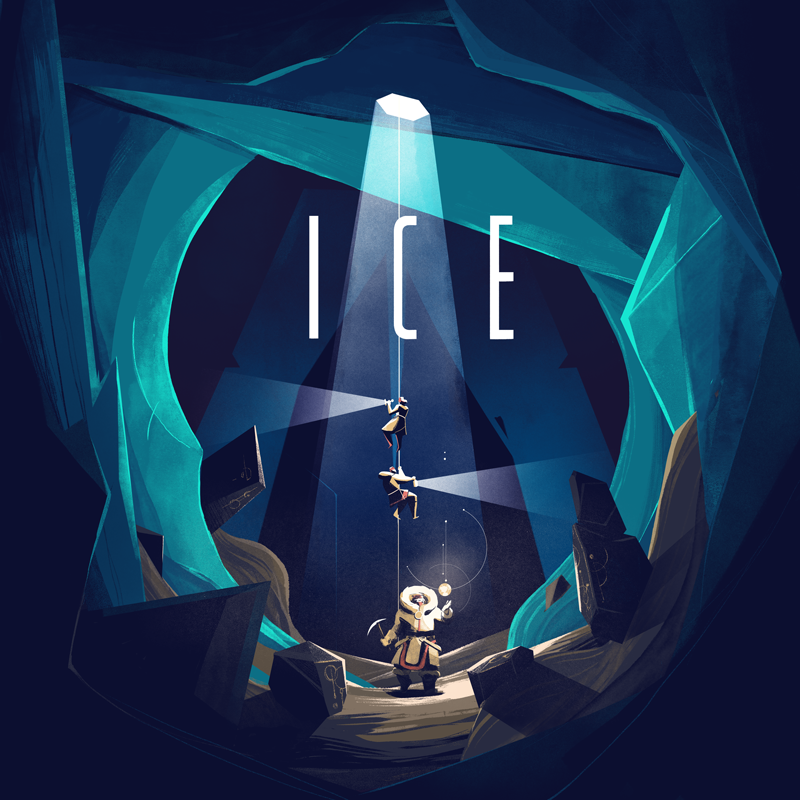
ANTON: Wow, ok — that was easy! But at that point, were you familiar with board games? Were you a fan?
LÉONARD: Not that much. Back then I had played, just two or three board games, like 7 Wonders. I had played a couple of Myrmes (a game with ants). But not that much, actually. I knew I liked it. But no, it wasn’t something that I knew well. It’s just at the time, something clicked. And I thought “Yeah, this is perfect.”
ANTON: What was it about this particular project, that you were like “ok, I want to do that.”
LÉONARD: Hugo told me about the LORE. So they had this lore of you know…ice, and something that was a bit like looking through the hourglass, and this entire atmosphere… very mystical. So I knew about the lore, and it definitely helped me to project myself within this rich universe. But I didn’t think much about the consequences — like making 90 illustrations in the end…
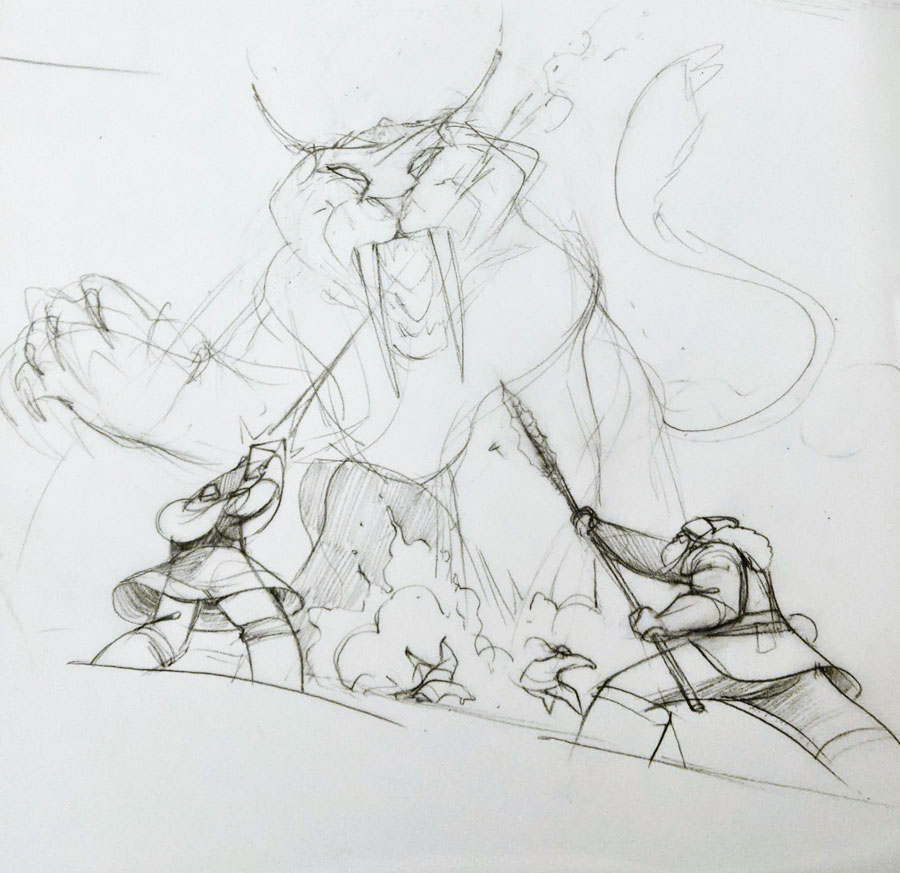
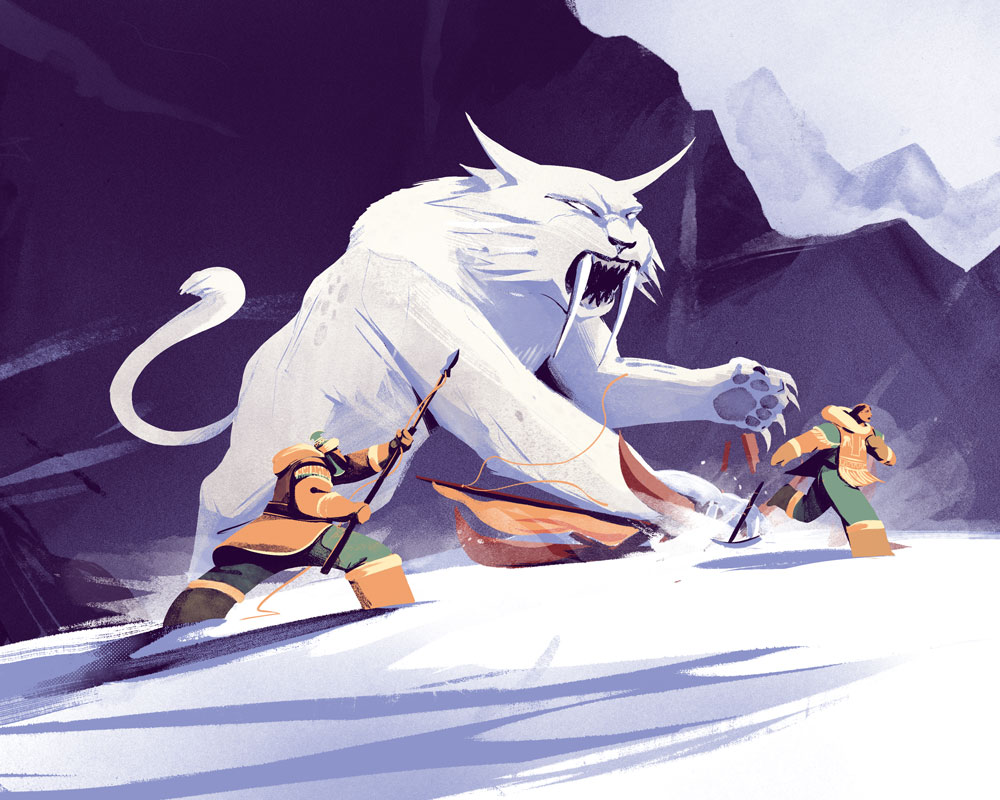
ANTON: Yeah! Especially since they mentioned that you didn’t get paid right away…right? [laughs]
LÉONARD: Yeah. He told me everything. There wasn’t any secrets. He told me it’s a risky project, we might fail, you might work for nothing… There’s something that you learn when you draw, that nothing is lost. So if you draw, and it’s a good drawing, and you did love something, you could always reuse it…
ANTON: True, true…
LÉONARD: So somehow, in my opinion, I wasn’t losing anything. Of course I would have been hugely disappointed if it didn’t work out. But… back then, I didn’t think much. I thought… OK, let’s try it. I kept this high spirit most of the project, not thinking much about would it succeed or fail.
ANTON: What was the first image… the first finished image you created… was it the cover?
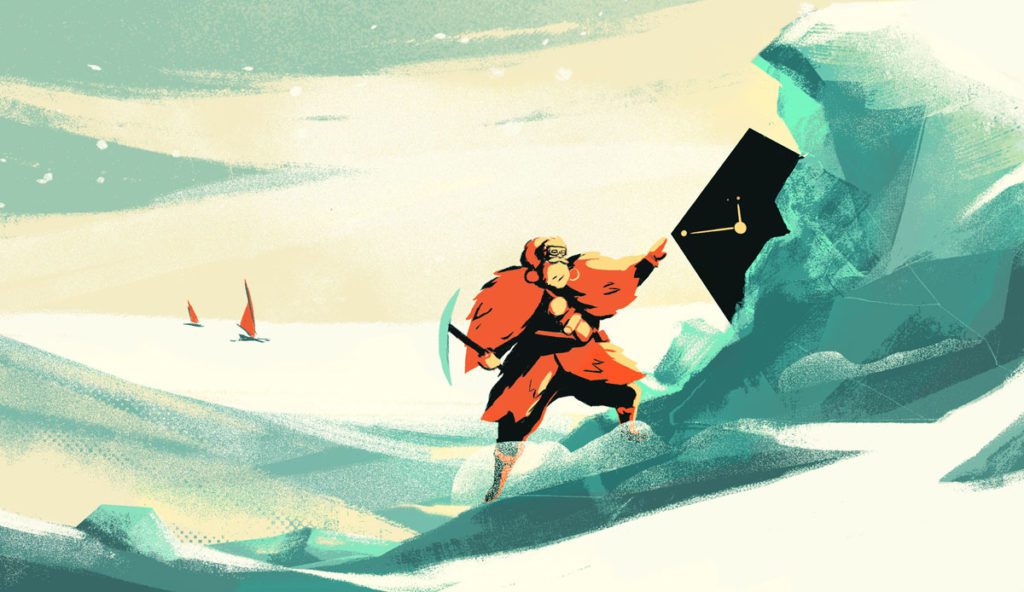
LÉONARD: No, it wasn’t the cover. You actually published it a couple of weeks ago for #ThrowbackThursday. It’s an image where an archaeologist uncovers an artifact, but it’s on the surface. I remember making this first drawing, and they were really hyped. But… they told me “Ah, that’s super cool…”
ANTON: “But…” [laughs]
LÉONARD: “…but we need you to do the same thing, but beneath the ice.” Because artifacts are not found on the surface. So they were like “Ok, super cool! But this is not the lore. This is not lore-compatible. Please do another one.”
But I guess that was the first one. And then I did a lot of sketches.
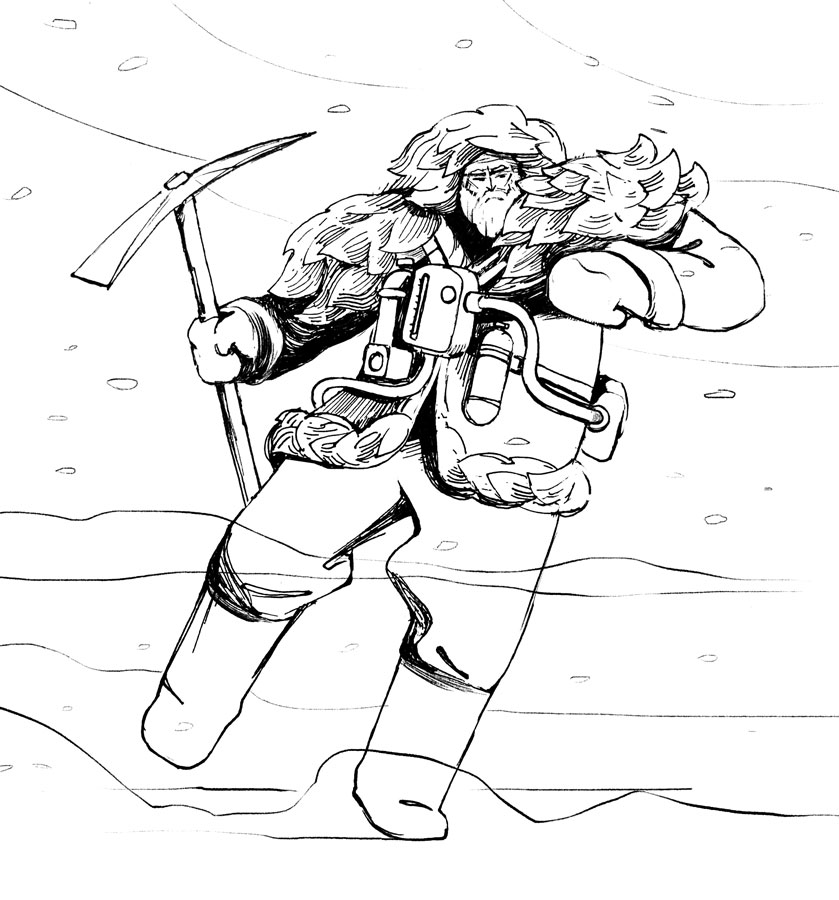
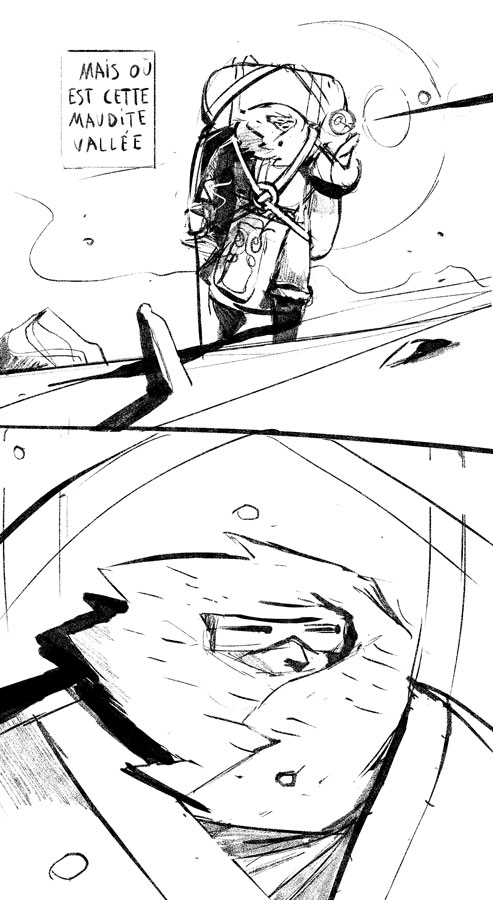
So Hugo… every year he’s doing sort of a workshop in a house from his family. And we go there, and I brought my sketchbook with me. And then I sketched tiles, I sketched the archaeologists… I sketched my favorite character from ICE — who came quite at the very early stages …
ANTON: Which one?
LÉONARD: The CryoArchitect.
ANTON: Oh yeah…amazing.
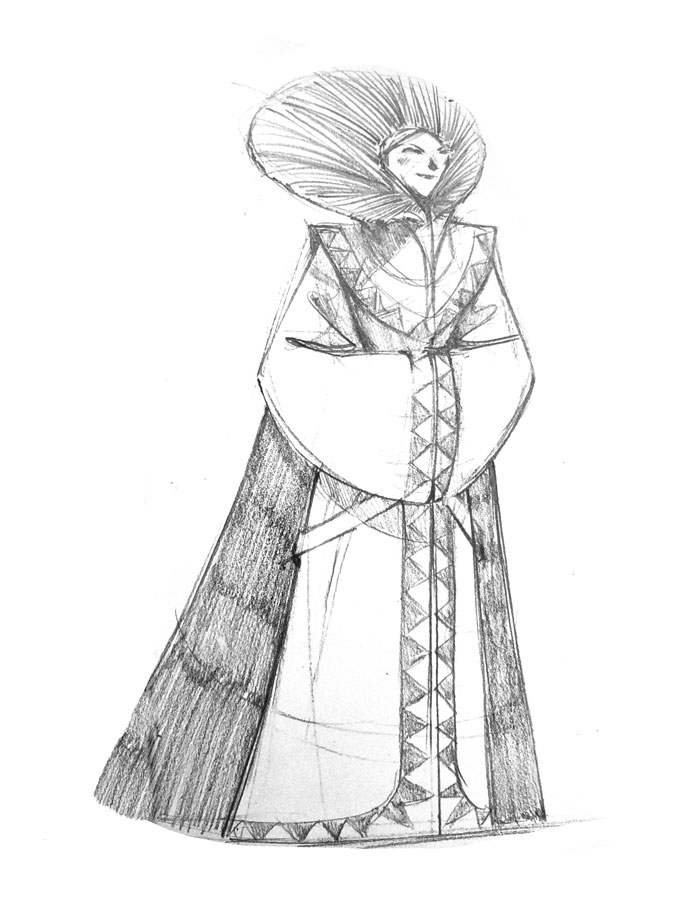
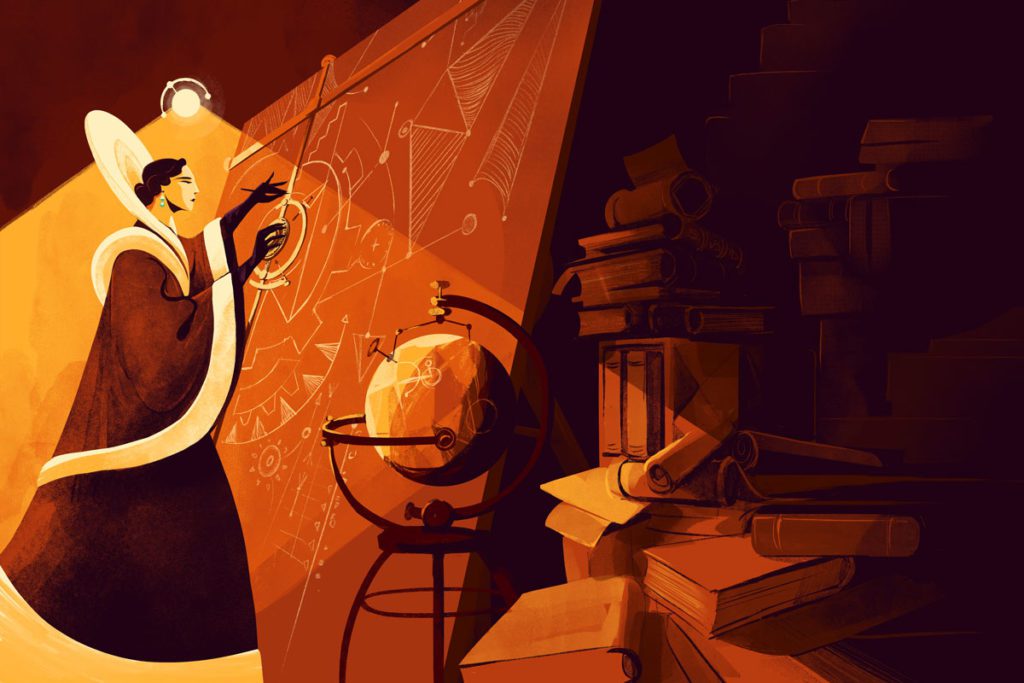
LÉONARD: So this was the 2nd or 3rd drawing I had done. And the [next] drawing must be the cover. So it came really early in the process.
ANTON: What’s the collaboration process been like? How much did Hugo & Samson give you in terms of details and lore, and how much of it came from you?
LÉONARD: I guess it’s sort of a 50/50 thing, because since they laid the basis of the lore, before I even got in — the “City Council,” the fact that the whole surviving is beneath the ice with this artificial sun, etc. — all of this was already written. So I got in this imagery that was theirs, but then the stuff that I’ve brought is the shapes, the costumes… Basically they would lay the structure of the lore, and I would just, you know… “decorate.” [both laugh]
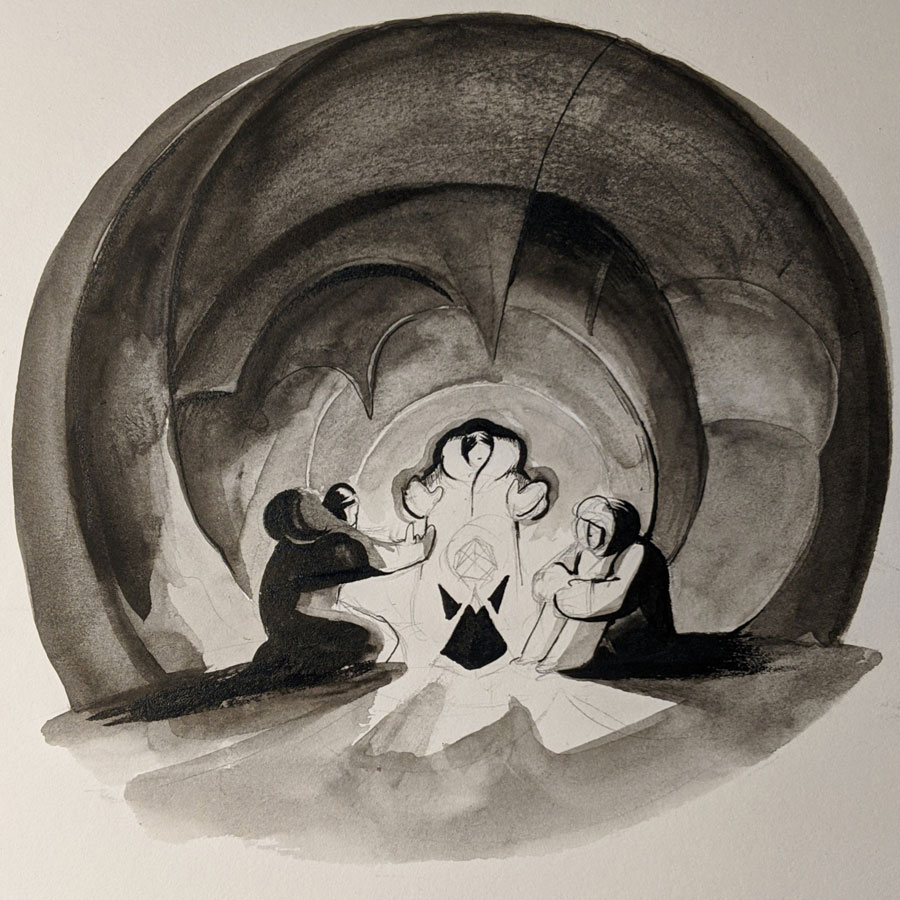
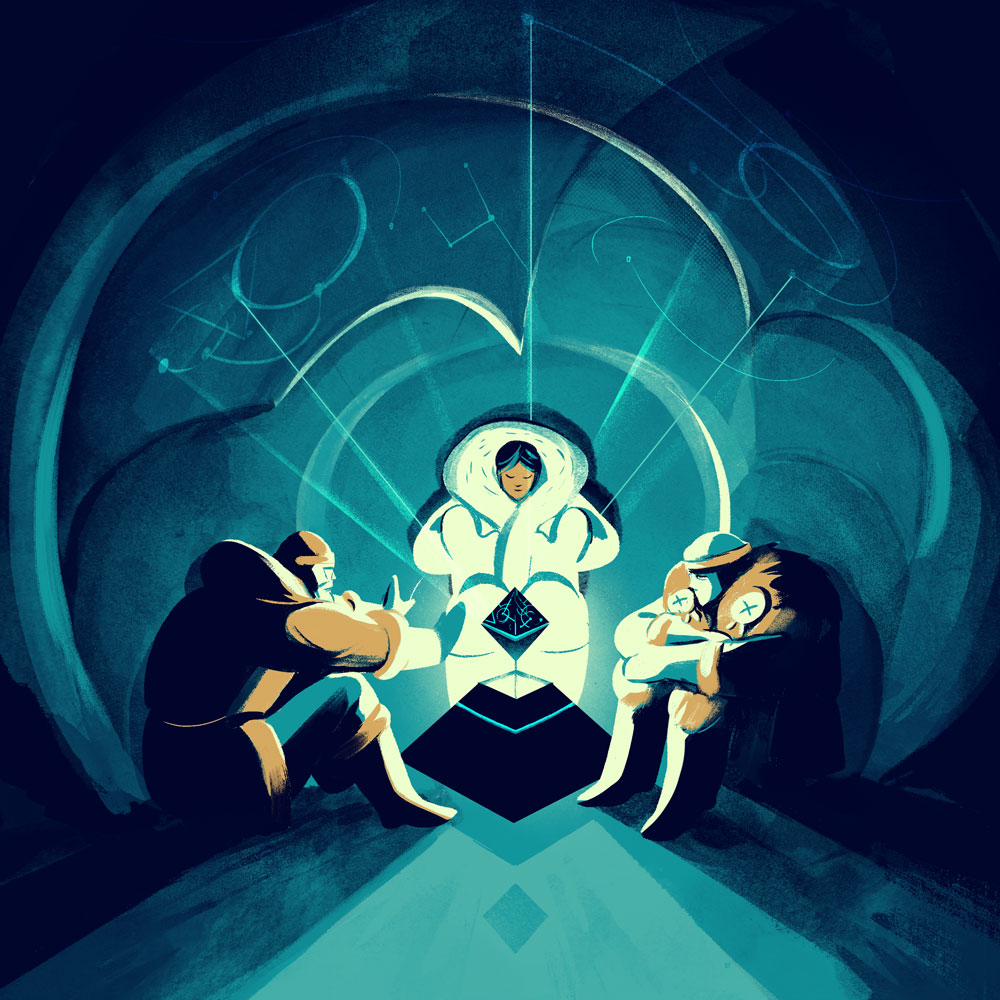
But they didn’t tell me much, so I had a lot of freedom to create.
ANTON: Oh, cool.
LÉONARD: But of course we would discuss… we would have some back-and-forth on the images. So I would say “Oh, I think this looks like an astro lab,” and they would say “Ok, perfect.” Or have some suggestions. But mostly, on what is pictured, is entirely my creation. But as I said, they created the “pillars” of this whole world. So… 50/50, I guess…
ANTON: Yeah. I mean I love all the little details… stuff like The Enlightened that are submerging in those ice baths, or whatever, to help them…
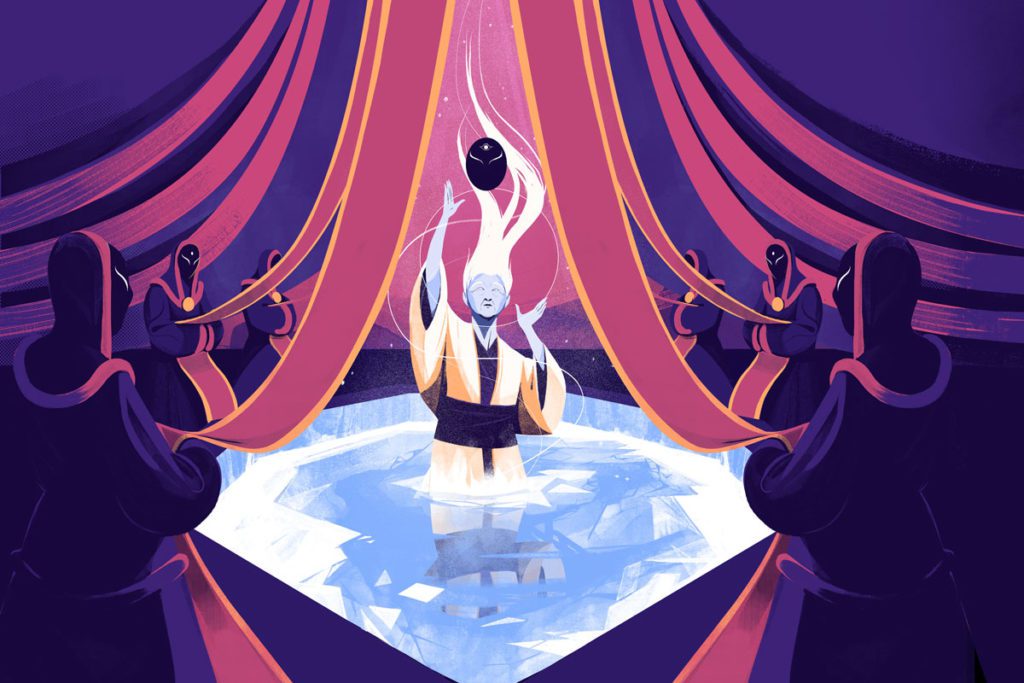
LÉONARD: So that was their idea, for example. But the fact that they wear masks — this was mine. So the core idea is theirs, but then how it looks, is mine. And maybe on a couple of others, I would tell them an idea, and they would bounce off that idea and have another one. So it isn’t clear, and I’m not very interested in knowing exactly who’s done what, since everyone on this project worked really hard. I kinda like to say that it’s 50/50, but everyone worked really hard.
ANTON: I love stuff like the strange tattoos on the Incandescents. Do those have any kind of special meaning? Or is it just a cool design? [laughs]
LÉONARD: So it’s going to be a huge disappointment, because this is purely aesthetic.
ANTON: [laughs]
LÉONARD: No — the meaning is that when they interact with the Artifacts, the objects are so strong, that they leave a mark on your skin.
ANTON: Oh, wow!
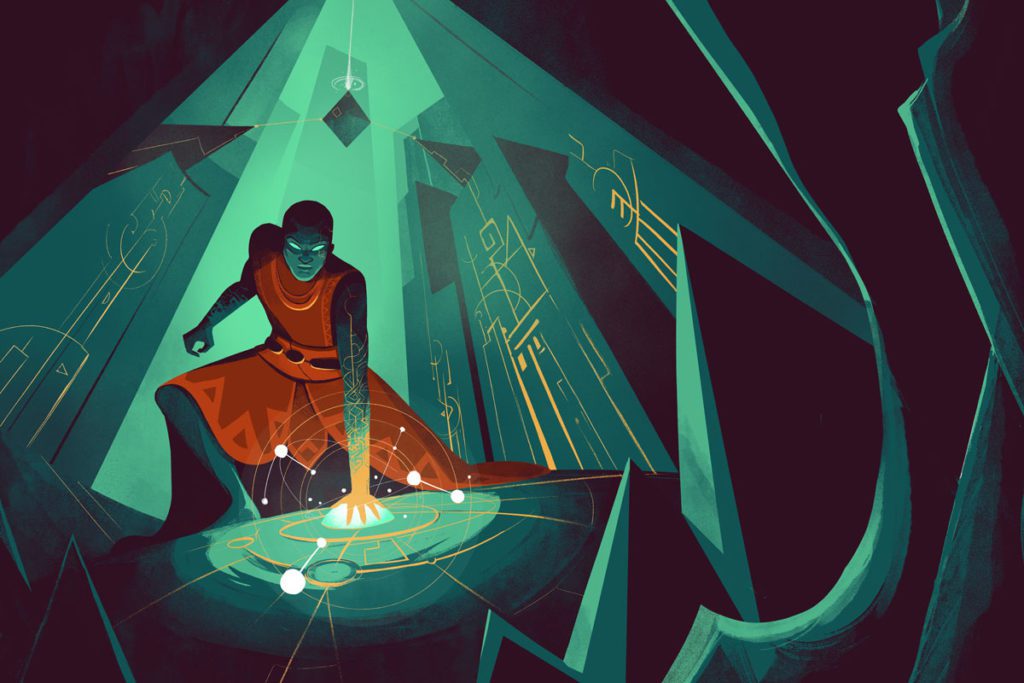
LÉONARD: And like a printed circuit of a motherboard from a computer, it prints this network of ink — but this network actually helps the one who’s having it, to connect again to the Artifact. So it’s sort of a relation where it kinda infects the one who uses it, and it helps them to interact further with it. And we don’t know for sure if it will kill you in the end, but you just get better and better at using the Artifacts.
ANTON: Wow, that’s really cool — I’m glad I asked that question! [laughs]
So you’re going to be doing the art for This Way!’s next game, which is going to be based on the whole City Council, and all the Guilds. What are you most looking forward to exploring with this next game?
LÉONARD: Yeah, that’s super exciting. That’s a whole new, rich environment to draw. What I’m looking forward to is doing the architectures of each Guild. For example, since we’re doing it in a very identifying… we want the Guilds to be a bit caricatural. For example the CryoArchitects are nobles, and they live in comfortable places where it’s warm, etc. But the [Navigators], they live in the fringes of the City, so they build sort of igloos and ice architectures, and they have don’t at all the same way of life as the people from the center of the City. So I guess it would be to draw them… not only digging or being outside, but within their environments. And then, the costumes — I’m really really looking forward to explore different costumes and elements they are wearing.
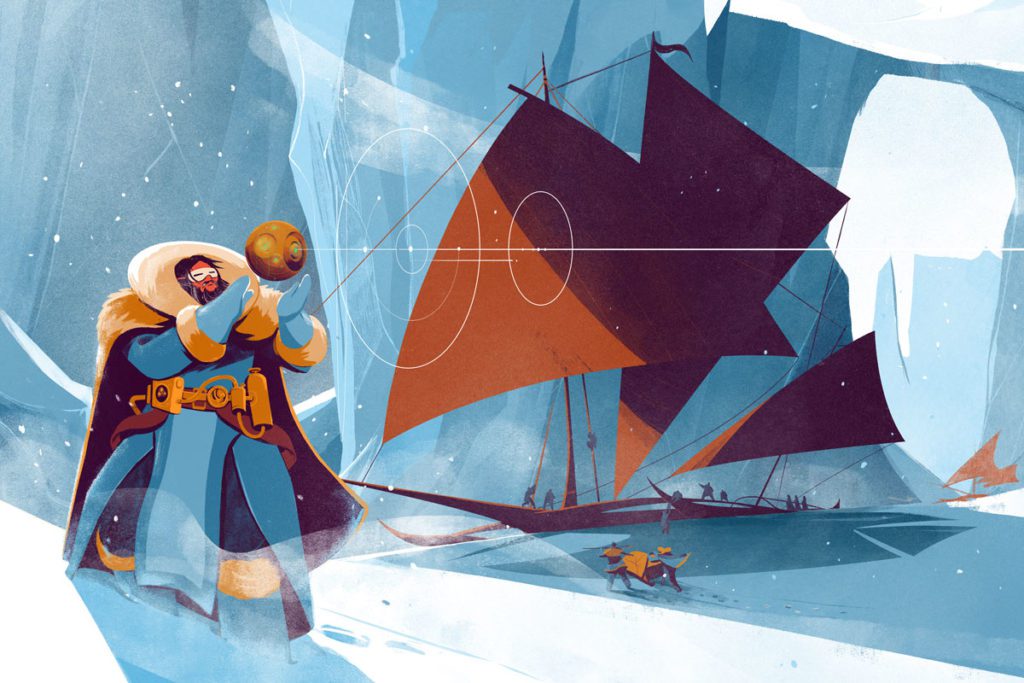
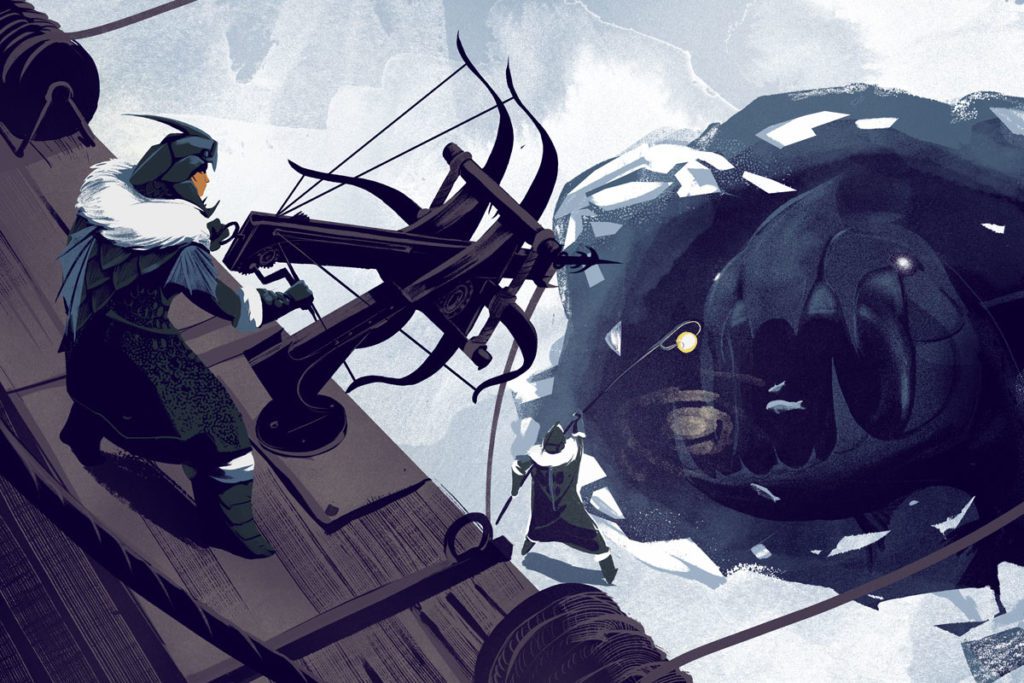
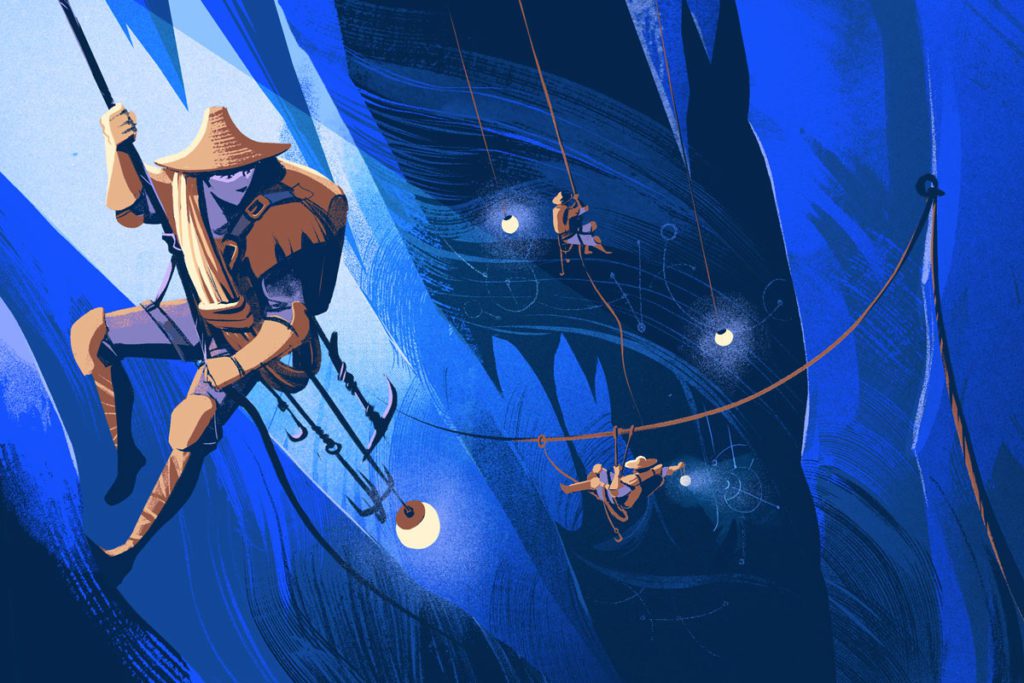
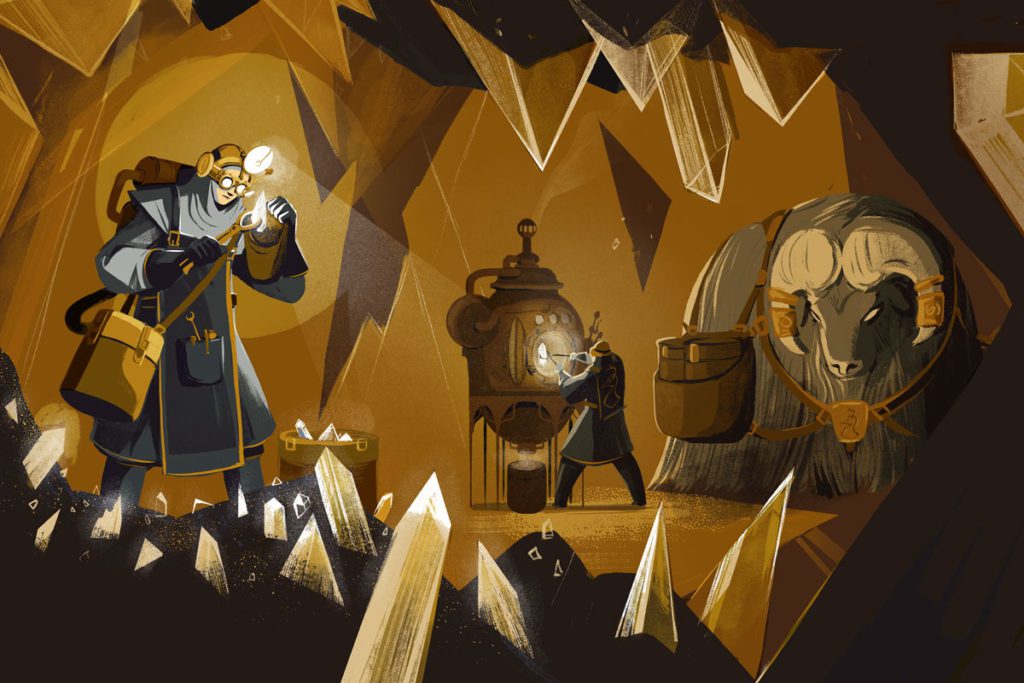
Different faces — I guess I’m going to do some sort of “casting,” the same you’d do for film — I’m going to look for faces that have a bit of charisma, and that’s going to be fun to do. But I don’t have any details on the content yet, so I cannot tell you more about it.
ANTON: Well we can’t wait! Did they give you any indication of how many drawings you’re going to be doing?
LÉONARD: Uh… it’s still in debate, you know? First we talked about 30, but then they told me it’s going to be 70. And I was like “OK, guys… we said it was going to be a smaller game.” So it’s still being debated.
ANTON: [laughs]. Well… smaller in size, yeah. But card-based, so they’re going to need a lot of art.
LÉONARD: As a reminder, I didn’t work full time on ICE, but it still took two years to do, and I want this one to be a bit quicker. So we’re still talking about it.
ANTON: So when you’re not drawing extremely cold universes full of strange artifacts and towering edifices, what kind of genres or themes get you the most excited, would you say?
LÉONARD: I’m really drawn to anything that revolves around “exploration.” I’ve drawn a lot of science-fiction. A lot of editors call me to do sci-fi book covers. So I guess that’s one of my main interests. But when I say anything around exploration, it could be beneath the sea, it could be travel… the exploration theme is huge, and it can go anywhere — from deep space, to the center of the Earth. That’s the kind of thing I want to draw.
And these days, I’m drawing a lot about sports, as well. I’m getting prepared for the Olympics, for Paris 2024. And my secret plan is to get called to do like posters, and stuff for the Olympics. So I’m getting ready for that.
ANTON: Oh my god, that would be amazing! Yeah, I just saw the recent drawing you did of you bicycling, which was so cool.
Are there any dream projects you hope to work on in the future?
LÉONARD: Yeah, tough question, I guess. My dream project would be to do more physical stuff. For example, do you know these frames…. these boxes in which you have an entire scene with cut-out paper, and it’s sort of a paper theatre — stuff like that. So yeah, one of my dream projects would be to take the time to do one of these frames.
And another project that I would love to do is to make a science fiction movie with zero euros. Zero money. Just finding ideas and stuff to do — maybe not a whole movie, maybe a short movie — but to film and create a sci-fi movie with nothing. Just ideas. That would be super exciting.
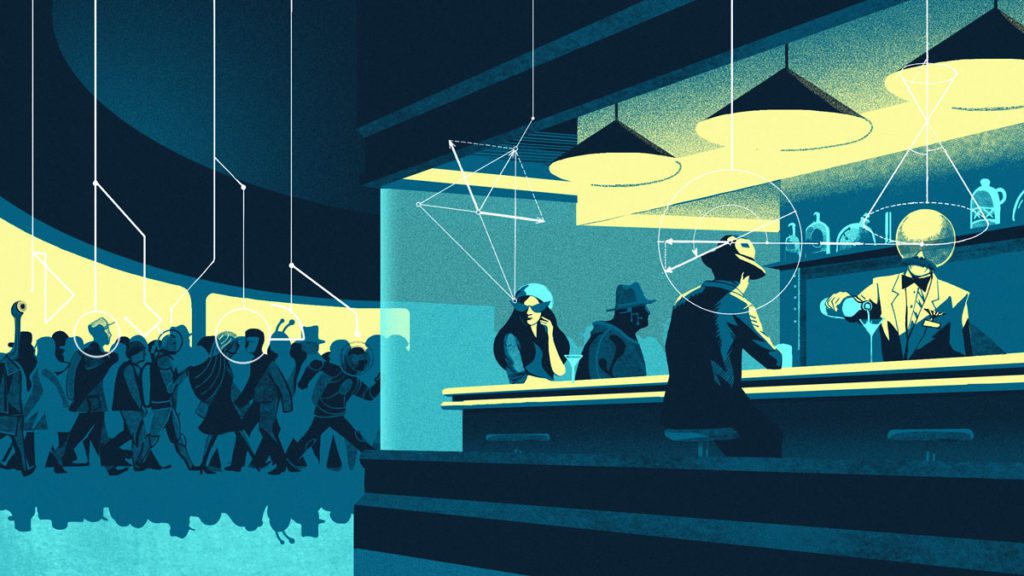
ANTON: Wow, that’s fantastic. Let’s hope that happens.
LÉONARD: These are my dream projects.
ANTON: Last thing I wanted to ask you, is — for any aspiring artists out there — do you have any suggestions, or recommendations… or things you think they should do?
LÉONARD: It’s a bit broad. I guess, as I told in the very beginning of this interview, the thing is, you will see — because you will be on Instagram, you will be on the social medias — it can be really discouraging to see all of these talented people having their own style, etc. And I guess the thing you need to tell is that they’ve all been living through what you are living right now. I’ve been there, and I identified the references that made me different from others.
For example, I love 19th century engraving, and I would just try to have these textures. Or I would take another reference and train to import what I loved within these references in my current work. So my main advice would be: Don’t just look at contemporary artists. Don’t just look at people like me, or way more famous people than me that are not very old. Just look at the masters. Look at what inspired these people. And go to the source of it, and remix it, make it your own, and this way you’ll find your own style.
ANTON: Fantastic advice. Wow. T hank you!
Alright, well that was amazing. Thank you so much for giving us your time to answer all of these questions.
LÉONARD: Thank you, Anton!
ANTON: And…that’s it for now. Stay tuned for our next interview!
LÉONARD: Cool. Bye bye, Anton!
ANTON: Byeeeeeeee.
